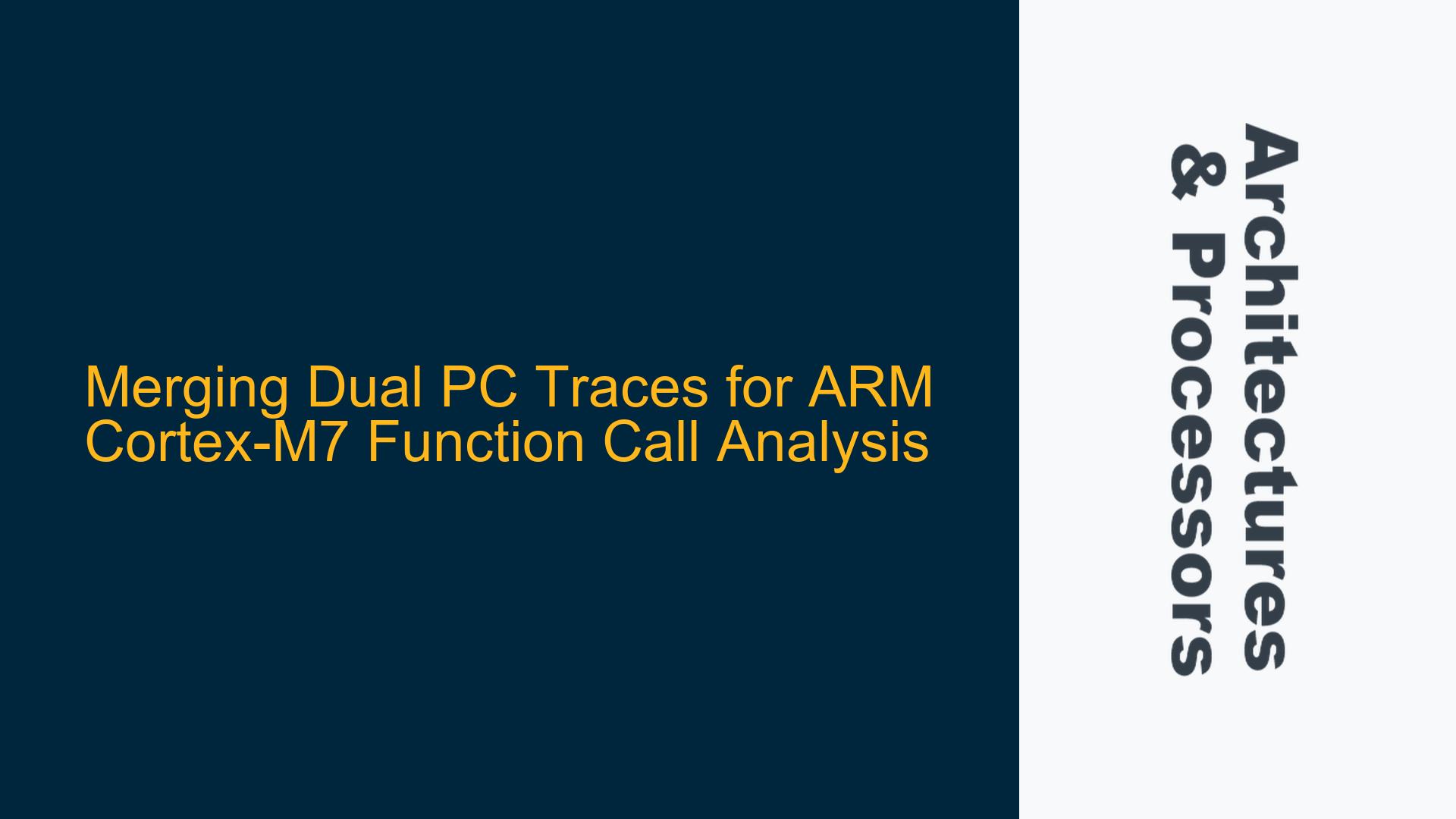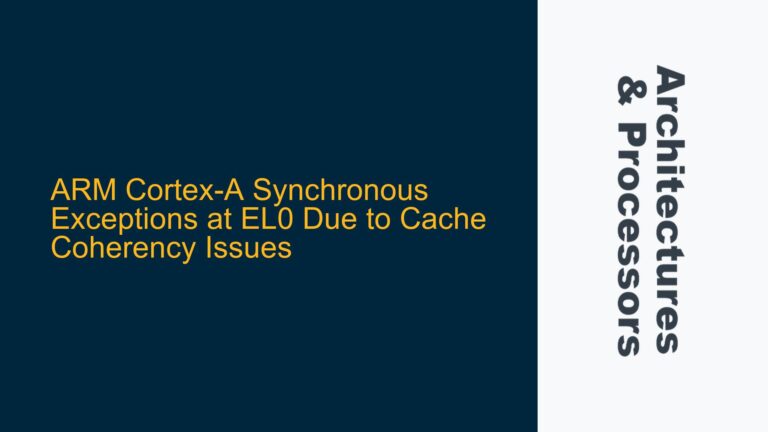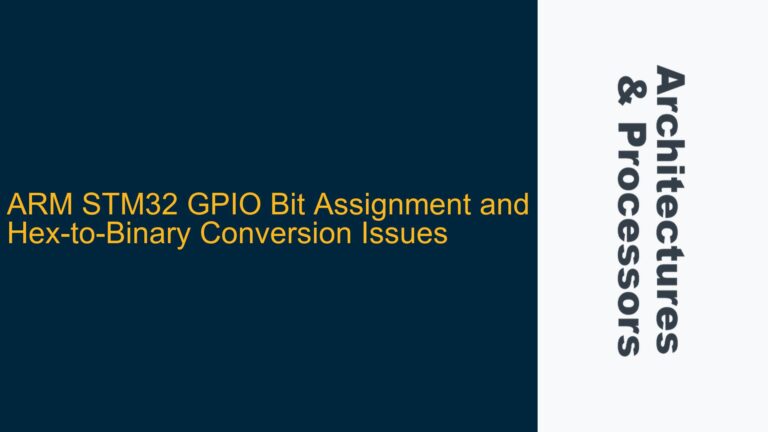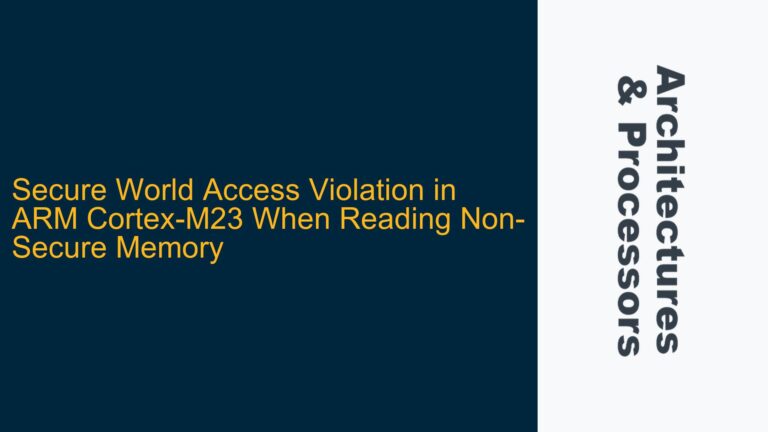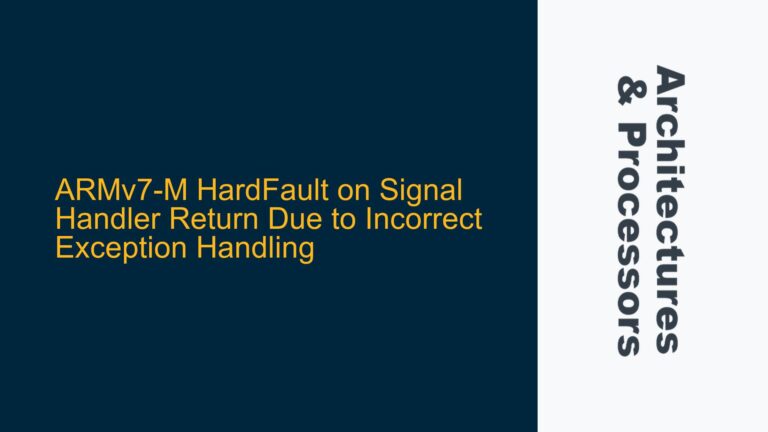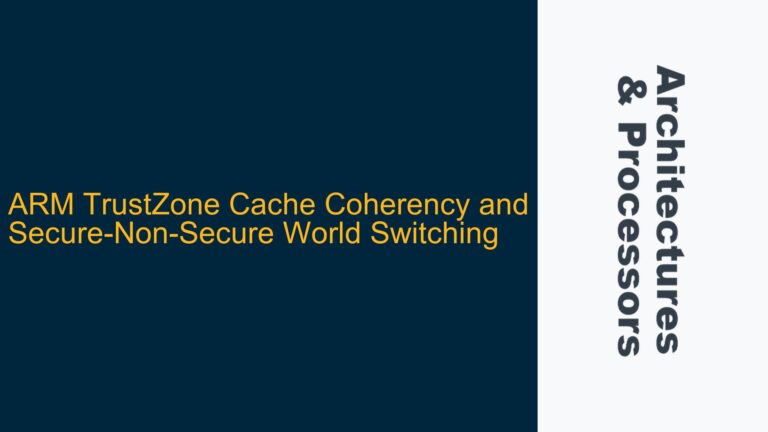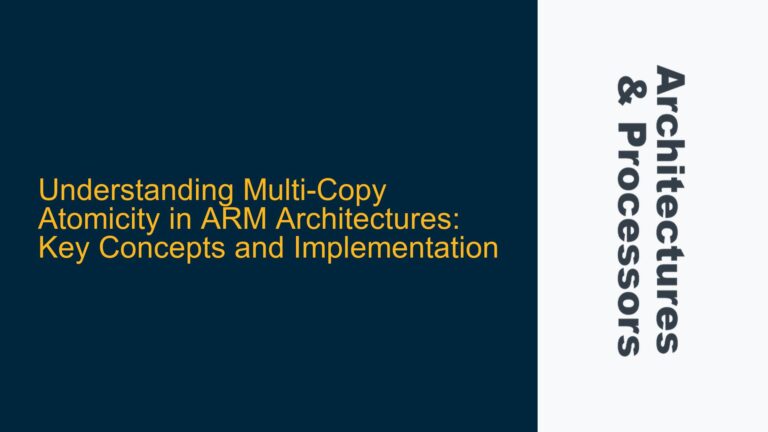ARM Cortex-M7 Dual PC Trace Synchronization Challenges
The ARM Cortex-M7 processor, with its dual-issue superscalar pipeline, can execute two instructions simultaneously under certain conditions. This capability introduces complexity when analyzing Program Counter (PC) traces, especially when attempting to map execution flow to disassembled code and identify function call boundaries. The dual PC traces, PC0 and PC1, represent the program counters for the two pipelines, and their synchronization is critical for accurate execution flow reconstruction.
The primary challenge lies in determining the order of execution when both PC0 and PC1 exhibit jumps, which may correspond to function calls, branches, or interrupts. Without a clear understanding of the pipeline behavior and the relationship between the two PCs, reconstructing the execution flow becomes error-prone. This issue is further compounded by the need to correlate timestamps with disassembled code to identify the start and end of function calls.
The Cortex-M7’s pipeline architecture allows for parallel execution of instructions, but this parallelism is not always deterministic. Factors such as instruction dependencies, cache misses, and branch predictions can influence the order in which instructions are executed across the two pipelines. Consequently, merging PC0 and PC1 traces requires a deep understanding of the processor’s microarchitecture and the ability to account for these variables.
Pipeline Parallelism and Instruction Dependency Effects
The Cortex-M7’s dual-issue pipeline enables it to execute two instructions per cycle under optimal conditions. However, this parallelism is constrained by several factors, including instruction dependencies, resource conflicts, and pipeline stalls. These constraints can lead to scenarios where the execution order of instructions across PC0 and PC1 is not straightforward.
Instruction dependencies are a primary cause of pipeline stalls. For example, if an instruction in PC1 depends on the result of an instruction in PC0, the pipeline must wait until the PC0 instruction completes before proceeding with the PC1 instruction. This dependency can cause a divergence in the PC traces, making it difficult to determine the exact sequence of execution.
Resource conflicts, such as contention for the same functional unit or memory access, can also disrupt the parallel execution of instructions. When such conflicts occur, the processor may serialize the execution of instructions, leading to discrepancies between PC0 and PC1 traces.
Pipeline stalls due to cache misses or branch mispredictions further complicate the synchronization of PC traces. A cache miss can cause a significant delay in instruction fetch, while a branch misprediction can result in the pipeline being flushed and refilled with the correct instructions. These events can cause temporary divergences in the PC traces, which must be accounted for during trace merging.
Trace Synchronization and Function Call Boundary Identification
To accurately merge PC0 and PC1 traces and identify function call boundaries, a systematic approach is required. This approach involves several steps, including trace alignment, instruction dependency analysis, and function call detection.
Trace alignment is the first step in synchronizing PC0 and PC1 traces. This process involves matching the timestamps of the two traces to establish a common timeline. Given that the Cortex-M7 can execute instructions out of order, trace alignment must account for potential divergences caused by pipeline stalls and resource conflicts. Techniques such as cross-correlation and dynamic time warping can be employed to align the traces accurately.
Once the traces are aligned, the next step is to analyze instruction dependencies to determine the order of execution. This analysis involves examining the disassembled code to identify dependencies between instructions in PC0 and PC1. By understanding these dependencies, it is possible to reconstruct the sequence of execution and identify points where the two pipelines diverge.
Function call detection is the final step in the process. This involves identifying the start and end of function calls by analyzing the PC traces for patterns indicative of function entry and exit. For example, a function call typically begins with a branch instruction that jumps to the function’s entry point and ends with a return instruction that jumps back to the calling function. By detecting these patterns in the PC traces, it is possible to map the execution flow to the disassembled code and identify function boundaries.
To facilitate this process, tools such as trace analyzers and disassemblers can be used. These tools can automate the alignment of PC traces, analyze instruction dependencies, and detect function calls. Additionally, simulation environments that support cycle-accurate modeling of the Cortex-M7 pipeline can provide valuable insights into the behavior of the dual-issue pipeline and help validate the accuracy of the merged traces.
In conclusion, merging dual PC traces for the ARM Cortex-M7 requires a deep understanding of the processor’s pipeline architecture and the factors that influence instruction execution. By employing systematic trace alignment, instruction dependency analysis, and function call detection techniques, it is possible to reconstruct the execution flow and identify function boundaries accurately. This process is essential for debugging and optimizing software running on the Cortex-M7, ensuring that it meets performance and reliability requirements.
